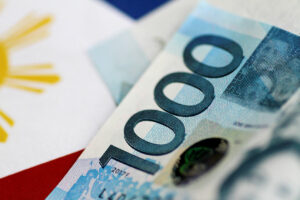UAE trade talks may start by early 2024

THE Department of Trade and Industry (DTI) said negotiations for a Comprehensive Economic Partnership Agreement (CEPA) deal with the United Arab Emirates (UAE) could begin as early as the first quarter, with a timeline of up to two years.
“We are done now with the terms of reference. So, first thing next year we will definitely conduct a series of consultations again and also work on the domestic processes. And then, we are eyeing to commence the negotiation by the first quarter of next year,” Trade Undersecretary Allan B. Gepty said in a briefing on Monday.
“And then, moving forward if the issues that arise are not ‘contentious’ then, we can expect smooth negotiations and conclude the negotiation if not next year, at least within two years,” he said.
Over the weekend, Trade Secretary Alfredo E. Pascual signed the terms of reference for the negotiations covering CEPA with the UAE Minister of State for Foreign Trade Thani bin Ahmed Al Zeyoudi on the sidelines of the Conference of the Parties 28 in Dubai.
CEPA will expand the flow of goods and services exports to the UAE and the greater Gulf region. It is also expected to generate more investment from the UAE and create more opportunities for professionals and service providers in the UAE.
“A CEPA with the UAE will be the Philippines’ first trade agreement within the Middle East and with a Gulf Cooperation Council (GCC) member state,” Mr. Gepty said.
“It is also important to take note that the current policy direction of the country is really to expand our FTA (free trade agreement) network … so in other words, we have to venture into partnering with other non-traditional partners,” he added.
The DTI said trade with the UAE amounted to $506.1 million in the first half, up 19.4% year on year. Non-oil trade exceeded $1.8 billion in 2022.
The UAE is the Philippines’ 17th largest trading partner and the top export market within the GCC.
Mr. Gepty said there are no estimates yet on how much the CEPA could grow bilateral trade.
“The interesting thing in the case of the UAE is that we are looking at exporting to them high-value products such as aerospace parts or helicopter parts and other industrial goods,” he said.
“And of course, taking into account our needs in the electronics sector, we are also hoping to participate in their supply chain especially if they will be aggressive in promoting digital transformation,” he added.
He also said that the Philippines is also looking at the investment opportunities that could stem from CEPA.
“UAE is one big investor that we can also attract here. Investments mainly come from the European Union, US, and other ASEAN member states. So, we want to further enhance the enabling environment so we can attract more investment from the UAE,” he added. — Justine Irish D. Tabile




